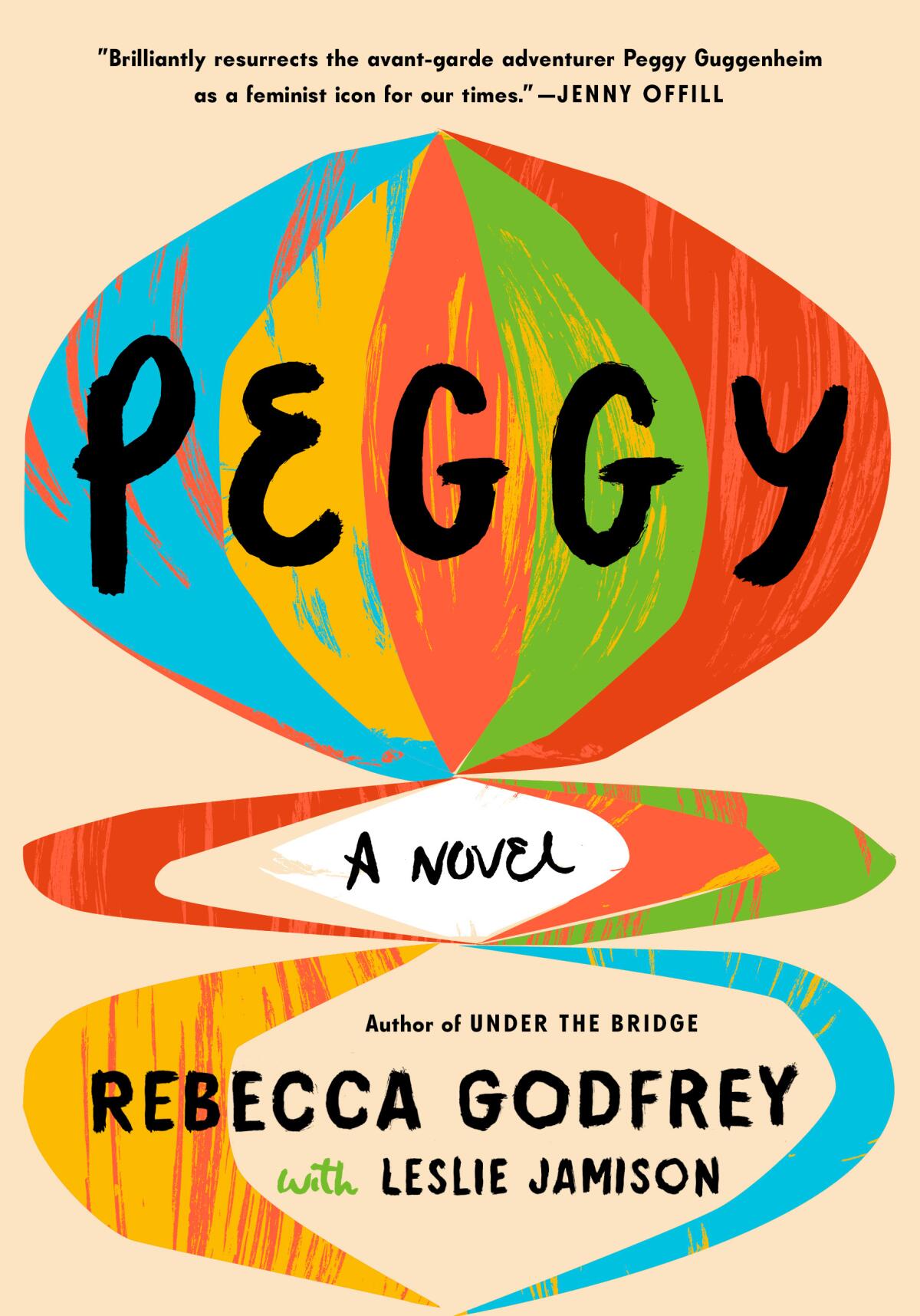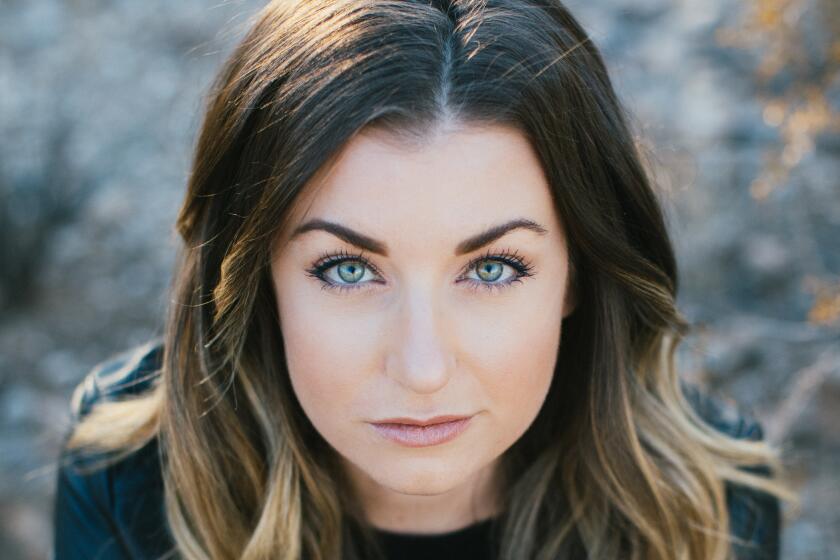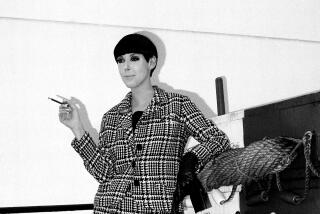âGhostwriting, in every senseâ: Rebecca Godfrey died writing a novel. Her friend finished it

On the Shelf
Peggy
By Rebecca Godfrey and Leslie Jamison
Random House: 384 pages, $29
If you buy books linked on our site, The Times may earn a commission from Bookshop.org, whose fees support independent bookstores.
How does one put aside grief to finish their late friendâs book? That was the conundrum Leslie Jamison faced when completing Rebecca Godfreyâs novel following her death from lung cancer in 2022.
Jamison is best known for her essay collections âThe Empathy Examsâ and âMake It Scream, Make It Burnâ and her unflinching memoirs âThe Recovering: Intoxication and Its Aftermathâ and âSplinters,â published earlier this year. Godfrey was the author of the novel âThe Torn Skirtâ and the harrowing nonfiction book âUnder the Bridge,â which was adapted this year into a Hulu limited series starring Lily Gladstone and Riley Keough â playing a dramatized version of Godfrey. âPeggy,â a fictionalization of heiress and gallerist Peggy Guggenheimâs life, is Godfreyâs third and final book, which she wrote during the final decade of her life. She died before she could complete the last act. Thatâs where Jamison stepped in.
The two met at Columbia University School of the Arts, where Jamison directs the Master of Fine Arts nonfiction concentration and Godfrey taught a unit on anti-heroines.

Jamison describes the class as an âinstitutionâ within Columbia. âAn anti-institutional institution,â she laughs.
Itâs for this reason that Godfrey was drawn to Guggenheim.
âRebecca was interested in women who disrupted things. Peggy was a bit of a disrupter. She liked artists that a lot of people didnât like. She lived as she pleased.
âPart of what makes an anti-heroine an anti-heroine is that theyâre not implicated in the same kinds of marriage plots that other heroines are implicated in,â Jamison continues. âThey find their intimacies not necessarily in the stability and resolution of marriage but in love affairs and chosen family and friendships with women.â
Greg Iles expects backlash from some white readers for his latest book, âSouthern Man,â set 15 years after the events of the âNatchez Burningâ trilogy.
Their admiration of unconventional women who prioritized sisterhood is what connected Jamison and Godfrey too.
âThere was a way that friendship and intimacies with women in this novel [were] connected to Rebeccaâs conception of an anti-heroine and how Rebecca lived her life,â Jamison says.
Though the two knew each other for less than five years, Godfrey and Jamisonâs friendship was an intense one that spanned many âradio channels,â as Jamison puts it. âThere was a kind of urgency and fervor to our friendship in those early days that had to do with the fact that she was already sick.â Godfrey was diagnosed with Stage 4 lung cancer in 2018 and given six months to a year to live. Godfrey survived for another four years, which Jamison, in a New Yorker essay, attributed to Godfreyâs âcontinual fight to steal another few months of life.â

One of those frequencies inevitably turned to discussion of âPeggyâ â out Tuesday â and whether Godfrey would be able to complete it. âIf she only had a limited amount of time, what did she want to do with it and how did she reckon with wanting to spend all of her time with her daughter and all of her time with her book?â
Though Godfrey never outright turned to Jamison to finish the novel, âit was an honor to be asked [by Godfreyâs literary agent and executor, Christy Fletcher], and a daunting task,â Jamison writes in the bookâs afterword.
When it became clear that Godfrey likely wouldnât see âPeggyâ come to fruition, she left instructions with friends and family about how she envisioned it concluding.
âShe didnât want a truncated [version of it with a] note that says, âIt ends here because Rebecca died.â She wanted a version that could feel like a complete work of art,â Jamison says.
Archie Panjabi stars as Suman Virk in Huluâs âUnder the Bridge,â about the real-life murder of Reena Virk, and tells what it was like to tap into a motherâs grief and to forgive.
In order to do justice to that version, Jamison âsteepedâ herself not only in historical material about Guggenheim, but in Godfreyâs own voice and Godfreyâs version of Guggenheim.
âIâm not even trying to imagine Peggyâs subjectivity, Iâm trying to imagine Rebeccaâs subjectivity of Peggyâs subjectivity!â
âMy worst nightmare was that I was going to drive Rebeccaâs voice out of the book with my own work,â Jamison says. Ultimately, she had to push any hesitance or tentativeness out of her mind. âIn order to inhabit her vision I had to leave deference behind and take a swing.â
Still, Jamison found the âtriangleâ of herself, Godfrey and Guggenheim easier than if she had been working alone within a âdyadâ of Godfreyâs âfictive construction.â
âI would have felt like I was trying to crawl inside something that absolutely wasnât mine,â she says.

The hardest thing for Jamison, as one might imagine, was combating the grief she felt after the loss of her friend while âghostwriting, in every sense.â
â[Working on the book] made me feel close to her,â she says, recalling times when she wished she could send a quote or anecdote from her research to Godfrey only to find that Godfrey had already discovered it and highlighted it, such as a 1938 letter Guggenheim penned to her friend, novelist Emily Coleman, about spending time in Paris âworking hard on my gallery and fâing.â
âI thought, âRebecca would have loved this line.â And she did!
T.J. Newmanâs first two books, âFallingâ and âDrowning,â ignited Hollywood bidding wars. Her new novel, âWorst Case Scenario,â is waiting in the wings.
âFinishing the draft was harder than writing the draft. Closing the document was the time that the grief felt most acute to me. I wasnât expecting to feel this acute stab of bereftness when it was done.â
Thereâs a line partway through âPeggyâ in which the titular character calls art âa living thing,â and one canât help but think of this book as a living thing. Jamison agrees, adding that every work of literature is a living thing.
âThereâs also a way that this book feels like a living thing insofar as Rebecca is no longer alive,â Jamison says. âThis book is not her, âPeggyâsâ not her, but it is this thing that she made, it contains so much of her, and so it feels like itâs a part of her thatâs very much still with us.â
More to Read
Sign up for our Book Club newsletter
Get the latest news, events and more from the Los Angeles Times Book Club, and help us get L.A. reading and talking.
You may occasionally receive promotional content from the Los Angeles Times.











